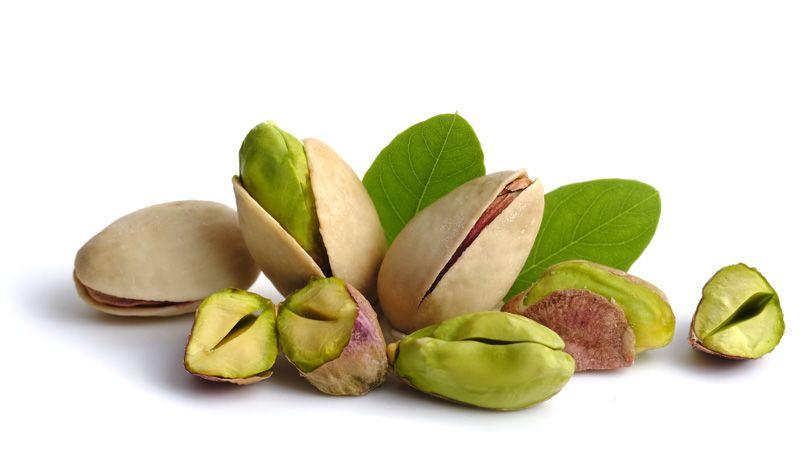Growing Pistachio
Pistachios are one of the first edible nuts and are commonly used in cooking and snacks worldwide. They belong to the Anacardiaceous family of the Pistacia genus. These are delicious hard-shelled green nuts initially grown in Asia and most often grown in Mexico, Arizona, and Southern California. These have been consumed for thousands of years and have excellent health benefits for the human body. It takes 10 to 12 years for a pistachio tree to produce the first fruit, but it is available year-round.
Health Benefits
- Pistachio contains a large amount of vitamin B6, which helps reduce swelling in the body.
- This nut is also rich in thiamine, a natural form of vitamin B1, which reduces stress and anxiety.
- These are one of the best nuts or seeds for kidney stone sufferers.
- Eating a handful of pistachios a day can make you feel more alert with better concentration.
- Pistachios can also help reduce the effects of aging.
- The copper content in pistachios helps improve skin health.
- These nuts also improve blood flow to help treat men with erectile dysfunction.
- Pistachios are usually eaten as a snack, but they can also be cooked in delicious recipes.
- The potassium in these nuts helps control sugar levels, reducing the risk of weight gain and diabetes.
- The vitamin E in pistachios is also very helpful in balancing hormones in both men and women.
- Taking these also helps maintain healthy eyes by bringing more lutein and zeaxanthin to the body.
- Pistachios are rich in ALA, a healthy fatty acid that increases energy levels in the body.
Planting Pistachios
Selecting Site
Most pistachios are wind-pollinated, so they should be planted to take advantage of the breeze. Pistachios grow best in deep sandy loam soils with good drainage characteristics. It is necessary to water the potting mixes 4, 5 days before because they need humidity to start well. They belong to trees with tape roots and require soil 7 to 8 feet deep to grow.
Pistachios grow 20 to 30 feet tall and wide. These types of trees need deep watering in the winter and are drought tolerant in the summer.
How to plant?
They require 14 to 20 feet of space, depending on the type of soil. Give them a good space if you have good deep sandy soil; otherwise, plant closer. Dig an extra inch the size of the root ball that forms at the bottom of your pistachio tree. Plant your pistachio and fill the pit. Gently tap it by hand or foot to make sure there is no air gap between the soil. Water them a little more during the first irrigation. It is a better idea to consult your field representative to discuss first irrigation. After the first overwatering, begin a cycle of watering these trees three times per week.
Care
- Because pistachios have a deep root system, they don’t need excess water. Water them properly to avoid conditions conducive to fungus growth.
- Fertilize your pistachio tree once a year with an NPK fertilizer such as 10-10-10 to meet its nutrient needs.
- Wait for the dormant season and start pruning your tree to maintain pruning and keep the canopy open. To do this, select three branches and prune all overlapping small branches. When pruning, don’t over-prune older branches as the tree needs mature growth.
- Propagate your pistachio tree for the best fruiting quality. Hybrids of two varieties can also be used to achieve both characteristics in the same fruit.
Harvesting Pistachios
Trees begin to bear fruit in the fifth or sixth year after budding but do not become fully fertile until they are ten years or older. Then, when the seeds easily separate from the shell, the nuts are ready. Unfortunately, at this time, there are only 7-10 days of optimal harvest left before the nuts become stained as they become overripe.
The trees are shaken, and the nuts are picked from below. A large sheet under the pistachio plant works well to boost up this process. Nuts should be peeled or dried the same day to avoid staining. This requires drying at around 5% humidity. Note that when pistachio trees reach adulthood (20 years or more), they often go into biennial production with a bountiful harvest every two years and light or no harvest in subsequent years. It’s normal.
Pest, Disease, and Their Management
- Alternaria late blight(Alternaria leaf spot)
Alternaria leaf spot occurs as circular, angular black lesions on leaves that enlarge, forming dark tan spots. Under humid conditions, black spores develop on lesions as pistachios mature. A severe infestation on the leaves can cause premature defoliation and create problems with shaking the trees during harvest.
Management
Alternaria leaf spot is difficult to treat, and all varieties used commercially are susceptible to disease. You can also use fungicides to limit the spread of this disease. A well-managed irrigation system must be followed; Practices that reduce standing water around trees are recommended.
- Armillaria root rot (Oak root fungus)(Armillaria mellea)
Pistachio roots infected with the oak fungus have yellow or white mycelial mats between the bark and the wood. Other symptoms include:
- Yellowing foliage.
- Discolored leaves that drop early.
- Branch death.
- Fungal growth at the base of the plant.
Management
Oak root fungus cannot be treated effectively once it becomes established in your garden. Remove old, diseased varieties and plant resistant models to prevent your trees from contracting this disease.
- Panicle and shoot blight(Botryosphaeria dothidea)
Vegetative and flower shoots that died in the previous season do not emerge and produce fruit clusters and shoots that develop fungus blight on the shoots. Black lesions may appear at the base of the shoots, but if they appear on the petioles, the leaflet dies.
Management
Panicle and shoot blight is very difficult to control and depends on the combination of;
Pruning
Fungicides Application
Well-managed irrigation Practices.

